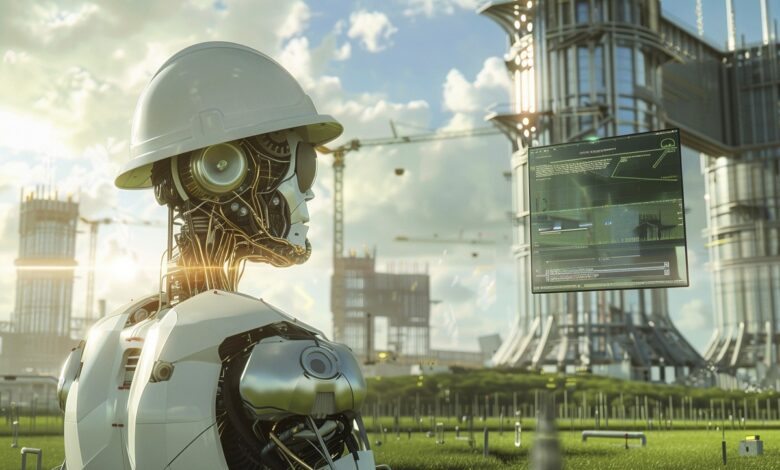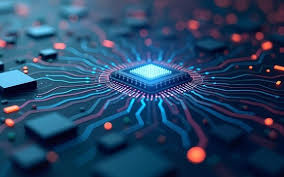
As the AI boom continues, data centers and other infrastructure require more and more electric power to start up and maintain their continuous operation. The sources must be equally high voltage/high power and utterly reliable regarding the uninterrupted power supply. It goes without saying that data mining is an extremely sensitive operation that affects the smoothness of information upload and calculations. Even a millisecond power supply interruption usually causes irreparable damage to the whole task or process, so after fixing a power outage, the data center operator usually has little choice but to run the computation task from scratch.
AI Energy Consumption: from AI Model Training to Powering the “World of Wisdom”
There is a rising energy demand across the technological sector, driven by the construction and operation of data centers utilized for AI model training. It’s contributing to an increase in global greenhouse gas emissions. Generative AI systems consume approximately 33 times more energy to complete a task than task-specific software.
Unarguably, training generative AI models is energy-intensive, which means that significantly more electricity is needed compared to conventional data center operations. This issue was rightfully highlighted by one AI researcher, saying “When you deploy AI models, you have to have them always on. ChatGPT never sleeps.” The evolution of large sophisticated language models like ChatGPT illustrates the growing demand in this field.
For instance, it’s estimated that slightly under 1,300 megawatt hours of electricity is required to train the Generative Pre-trained Transformer (GPT-3). Drawing the line, it’s roughly an equivalent to the annual power consumption of 130 households in the U.S. Training the more advanced GPT-4 is forecasted to have consumed even 50 times much.
The Ongoing Patterns of the Sixth Industrial Revolution
The Sixth Industrial Revolution, driven by the mix of AI, advanced computing and development of sustainable technologies, is fundamentally reshaping the energy market infrastructure due to the explosive growth of AI data centers.
Ever-increasing AI workloads, especially those involving large language models and requiring immense computational power, witness a massive increase in electricity demand. This results in a dramatic surge in electricity consumption by AI data centers, putting pressure on existing energy grids. The existing demand does not represent just a one-time increase, it’s more about an exponential trend that requires significant infrastructure upgrades.
Intense energy demands of data centers, even though they are local, require more distributed energy generation and building of more localized microgrids. This promotes the idea of renewable sources of energy integration, such as solar and wind, near data center locations. Smart grids and energy storage systems representing flexible grid technologies are becoming essential for managing the variable AI workloads’ energy demands.
The majority of tech companies which operate AI data centers are committed to fulfilling 100% of their renewable energy goals to mitigate the environmental impact. Consequently, this adherence to renewable energy results in an inflow of investments into renewable energy infrastructure, that leads to faster adoption of solar, wind, nuclear and other clean energy sources.
More and more worldwide AI data centers are increasingly investing in on-site energy generation and storage, including large-scale battery storage systems, on-site solar and wind installations and backup generators powered by environmentally friendly fuels like hydrogen or natural gas. Small modular nuclear reactors (SMRs), which we have already discussed in one of our previous articles, are also considered a future source of reliable power for data centers.
All in all, we clearly see increased pragmatic focus on energy efficiency. The high energy consumption of AI workloads drives not only the use of specific clean energy sources, but innovation in energy-efficient designs and operation networks. Current priorities include bigger electric power demand for the advanced cooling technologies and optimized power management systems. This, obviously, is the cause of AI-powered energy optimization developments.
Data-Driven Energy Management dictates new patterns and metrics. It’s interesting that AI itself is used to optimize energy consumption and grid management. Modern machine learning algorithms have already been taught to predict future energy demand patterns to reshape grid operations and renewable energy architecture. The whole cycle creates a feedback loop, where AI data centers help to develop smarter and more efficient energy systems.
Many energetic companies began to adapt their strategies to meet the needs of this rapidly growing sector, responding to this trend. The rise in demand has already led to the increase in the price of electricity in some areas.
As a result, the Sixth Industrial Revolution is driving a fundamental shift in the energy market infrastructure through the dissemination of AI data centers, striving for a more decentralized and sustainable market future.
Innovative Energy Sources: What are They?
Nuclear power generation, the most refined and powerful energy source on Earth to date, is not safe. We see how the risks of natural disasters are increasing (the 1986 Chernobyl catastrophe was essentially reproduced in Fukushima, Japan, in 2011 ‒ arguably, with less pronounced consequences, largely because it was built near a vast water reservoir, the Pacific coast of Japan), and, consequently, the risks of destruction of nuclear power plants. Safety is a priority and nuclear power does not pass this indicator.
That is why the largest of the scientific research centers under construction, besides the large android collider, is the experimental thermonuclear reactor near Marseille paving way to the new safety and stability standards of industrial nuclear energy. Speaking about the latter, upon completion, Marseille’s ITER will be the world’s largest tokamak, a device designed to harness the energy of fusion. It will represent a major step towards developing fusion as a clean and abundant energy source.
As such, hydrogen as an energy source holds significant promise, but its viability in 2025 and beyond is a complex issue.
Promising aspects of hydrogen generation include high energy content per unit of mass, making it attractive for applications where weight is a concern. When hydrogen burns with oxygen, the primary byproduct becomes water, making it a very clean and safe energy source. Hydrogen can be used in various applications, including fuel cells, combustion engines, and industrial processes, including the highly demanding data centers.
Consequently, hydrogen is en route to play a higher role in decarbonizing sectors that are difficult to electrify. Just like conventional fossil fuels, hydrogen can be stored for long periods of time, allowing for long term power supply planning of renewable energy.
Speaking about hydrogen as a promising alternative power source for AI powering datacenters, there are several considerations to note. First of all, “green hydrogen” (produced from renewable energy via electrolysis) is the ideal, but it’s currently expensive and not widely available. In contrast, “gray hydrogen” (produced from natural gas) is cheaper but generates significant CO2 emissions. In its turn, “blue hydrogen” (gray hydrogen with carbon capture) is a middle ground, but carbon capture technology still has limitations. The overall cost of hydrogen production, storage, and distribution remains high, hindering its rapid widespread adoption.
What are the factors that will influence the timing and nature of the power source transformation?
Speaking about the now detectable key factors shaping the power source transformation, AI itself is already playing a notable role in optimizing energy production, distribution, and consumption. Currently developed advanced algorithms will be implemented in the next few years to improve grid efficiency, automatically predict demand, and enhance the performance and stability of renewable energy systems.
Rapidly developing upgrades in the battery technologies, along with more pronounced construction of hydrogen storages, and other energy storage solutions will be crucial for balancing the intermittent nature of renewable energy. The ongoing struggle for better cost and efficiency of green hydrogen production will determine its viability as a widespread energy carrier, while the continued decline in the cost of solar, wind, and other renewables will drive their adoption in small and medium datacenters.
Conclusion
Data Centers will inevitably require more and more reliable, powerful and uninterrupted energy sources, which will shape our energy doctrine in the next decade. Hydrogen has the potential to be a vital part of a sustainable energy mix, but significant technological and economic challenges remain. In 2025, it’s a promising area of development with a long road ahead. The next several years will be crucial for scaling up production, reducing costs, and building the necessary infrastructure.



